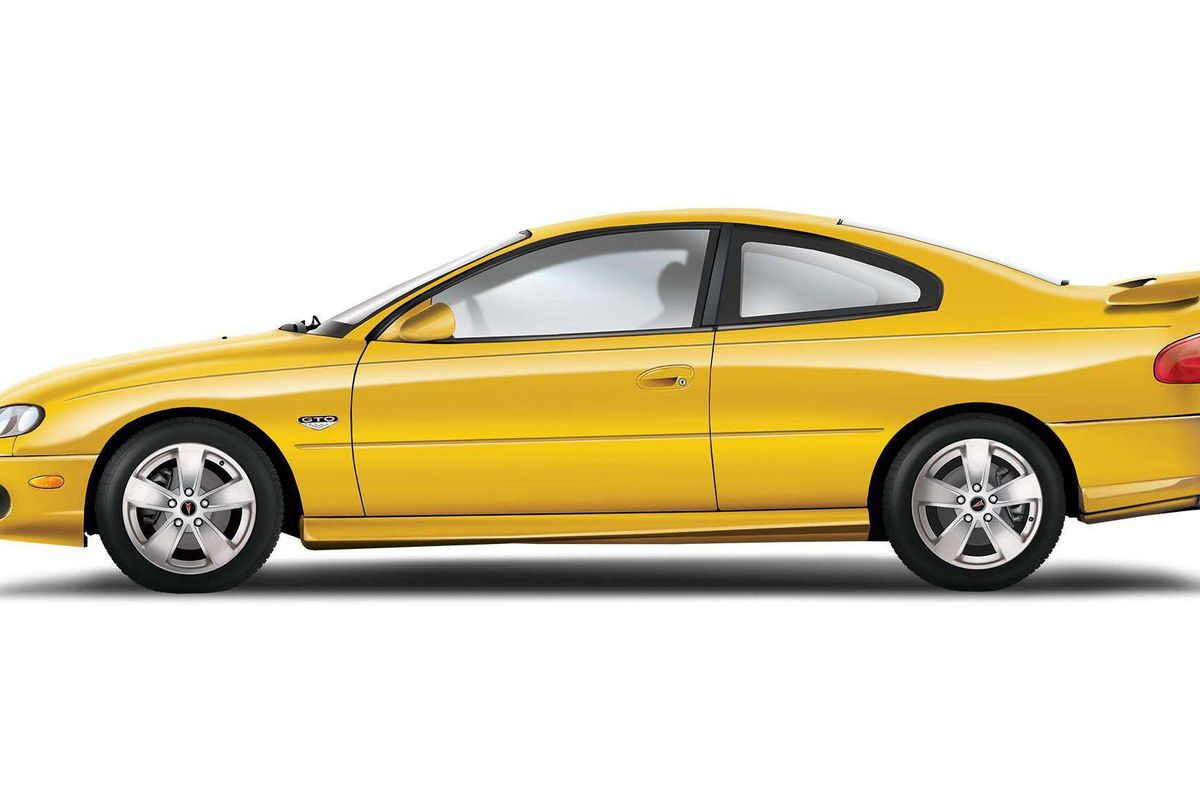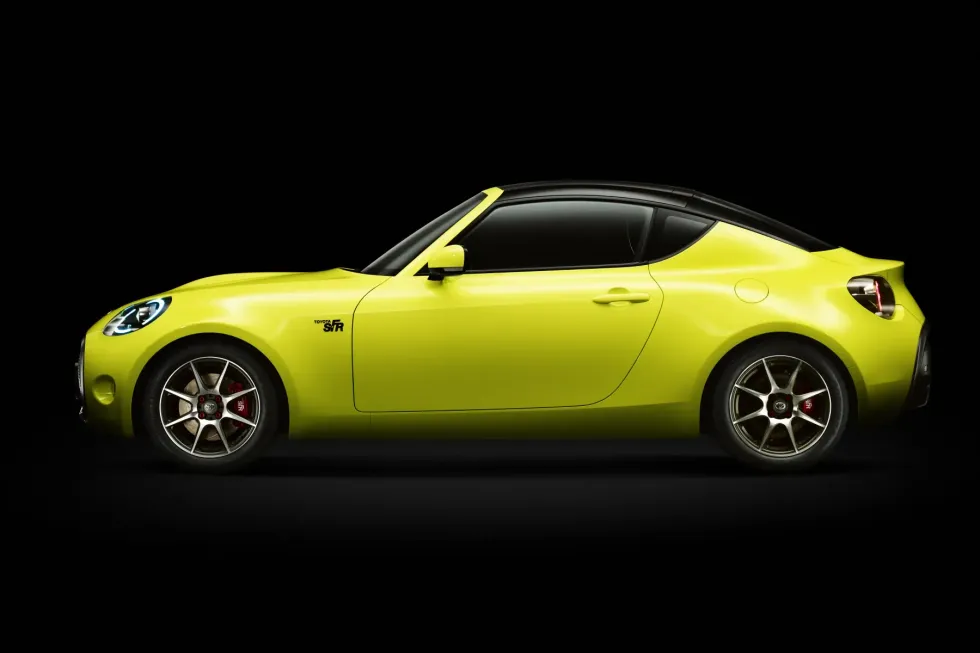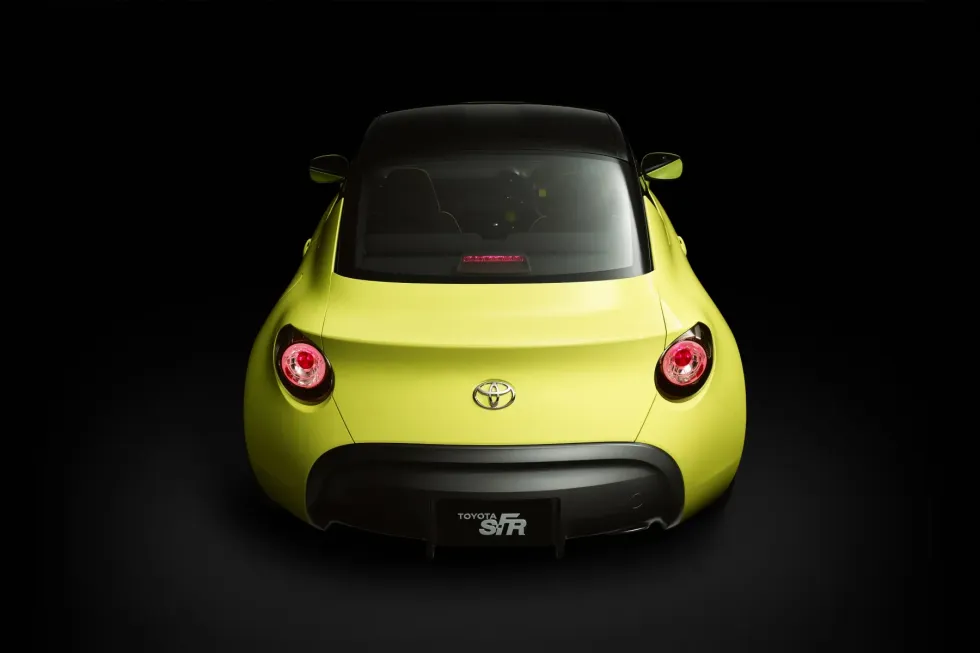
Buy
Resources
Entertainment
Magazine
Community
Australia's muscle car scene paralleled America’s but managed to last longer than the U.S. version. While American cars were choked with air pumps and catalytic converters and suffered the ignominy of the 5-mph bumper, the Aussies had Ford Falcon GTHOs, Chrysler Valiant Chargers, and Holden Monaro GTSes (and even smaller Holden Toranas when properly equipped) well into the 1970s.
The original Monaro was the coupe variant of Holden’s new-for-1968 HK series of family saloons. (Think of it as Australia’s Camaro, in relation to the Nova.) Roughly 200,000 HK-chassis Holdens were built through 1969, with the coupe variant living through 1971. The coupes, particularly in GTS327 and GTS350 form, borrowing American engines, were some of the hottest performance cars of the era. Norm Beechey drove a Monaro to third place in the five-race Australian Touring Car Championship, after winning the last two races outright. And Wheels magazine, Australia’s version of Motor Trend, named it Car of the Year for 1968.
All of this is context for the car you see on these pages: the 2004-’06 Pontiac GTO. In 1998, Holden developed a coupe version of the recently launched Holden Commodore VT, a car that started off as an Opel Omega (sold Stateside as the Cadillac Catera) but was then significantly reengineered for Australian conditions. It was dubbed Monaro, a name that had since slipped into Australian automotive legend. Buoyed by the positive response at home, the new Monaro went into production in 2001 for the Australian market. By spring 2002, Bob Lutz was running GM and announced that he was bringing the Monaro (powered by GM’s LS-architecture V-8) to the States, making it a Pontiac exclusive and calling it GTO. With the Australian dollar exchanging at around 46 cents to the US dollar in late 2001, when plans were drawn up, the GTO could be sold for reasonable money, plus it would put some excitement back in the "We Build Excitement!" division after the demise of the Firebird. It looked like both dealers and GM could make a couple of bucks out of the arrangement. It was no flimsy pony car: It was a bona fide grand touring machine, with power, luxury, and style in equal measure, at home on the open road or on a closed course. It could even help drive Pontiac upmarket.

Yes, some choices had to be made for federalization. The fuel tank, for example, was moved to the trunk in order to pass NHTSA crash regs, thereby eating up most of what was already not that much cargo space. Even so, it was a far nicer-to-drive car than the Mustang was at that time, and with a projected $25,000 starting price (not far from that of a Mustang GT) the GTO would have the clear value advantage, with an extra hundred or so horses, a more comfortable all-independently-suspended ride, an extra gear in the transmission, and a far richer-feeling interior when placed against the comparison.
But then September 11 happened. Shortly thereafter, the Australian and American dollars were trading within ten cents of each other, eliminating GM’s cost advantage. This pushed the GTO’s base price to $33,900 in 2004, so marketing pitched it against a 3-series BMW coupe rather than sticking to its muscle car roots. The resulting ads felt like the ’70s, when Ford’s Granada pitch tried to make us believe that its warmed-over Falcon was just like a new Mercedes. Who cross-shopped BMW and Pontiac?
You could also argue that the GTO was priced too high for the adrenaline-junkie speed freaks who needed 350 (and later 400) horses at their disposal. There were also those who felt the new car didn’t match their vision of what a GTO should look like, and many slammed the new model without ever driving it.
It’s easy to point fingers at why GTO didn’t live up to sales projections but, in truth, production was announced to be limited to 18,000 units per year, dictated by the excess capacity of the factory in Elizabeth, South Australia. Yet the end of production wasn’t triggered by slow sales: The GTO was halted to make way for the new-generation Holden Commodore, which came to the States as both the Pontiac G8 sports sedan and (from 2012) Chevrolet Caprice police fleet vehicles. The GTO was only ever scheduled to live until the end of 2006. "How good is the new GTO?" we
asked in the pages of HMM in 2004. "It’s so good, that if it were called something else, Boomers would flock to their message boards and admonish Pontiac for not calling it a GTO." Alas, the last GTO has now been gone for more than 15 years, which means it should be near the bottom of its value curve. Time to talk about what to look for if you’re on the prowl for a copy of the most underrated performance car of the first decade of the new millennium. One tip we heard repeatedly: Don’t just check the CARFAX report—also check out the GMVIS, which will give a complete service history, whether any warranty work was performed (or not), and lots more information.

DRIVETRAIN
For 2004, the GTO used the 350-horsepower 5.7-liter LS1, as previously seen in the Corvette and F-body twins; by 2005, GM installed the 400-horsepower 6.0-liter LS2. The ’04 models have the exhausts exiting on one side, while the 2005-’06 cars have twin exhaust outlets through a slightly modified rear fascia. Both engines respond well to modifications, and this might be an issue if you’re seeking out a collector-grade example of the breed rather than simply a driver or a ten-second track missile. Anything you could do to an F-body or Corvette (heads, headers, injection mods, exhaust, supercharger, you name it) could also be done to a Pontiac GTO—and probably has been.
Once the GTO became just a used car and its price dropped into the realm of affordability for bucks-down enthusiast second-owners, plenty of these cars got modified. Alterations were made by professional mechanics and backyard tinkerers alike, and the quality of the work and the modifications can vary widely. The GTO’s chassis configuration demanded a front-sump oil
pan, which can starve the pump under hard acceleration, so listen carefully for engine noise.

As far as transmissions go, the Tremec T56 six-speed was optional when new, but still the more common choice for the run of 2004-’06 GTOs. All GTOs run a 3.42:1 final drive in the differential and use a two-piece driveshaft with a center carrier that is prone to breakage under enthusiastic use. More hardcore fans will warn you about the GTO’s "13 points of driveline slop" but for well-maintained, adult-owned, street-driven cars that haven’t been abused, this shouldn’t be an issue.
Some owners have reported that their T56 transmissions make more noise than they think prudent, but some degree of gear noise is said to be normal for this gearbox. Differential whine happens occasionally, so cruise at highway speed and listen closely. Automatic-equipped cars are said to be quicker through the speed traps at your local drag strip. Both options are robustly engineered for long life and are readily serviced should the need arise. A six-speed GTO should see its hydraulic clutch fluid changed regularly, on a similar service interval as the brake fluid.
CHASSIS
A common issue with the GTO is its rear springs, which have been known to sag quickly. Switching to aftermarket coils —Pedders is a popular name within the GTO community—will help keep the tail up where it needs to be. Ignore it, and the sag will force excess camber across the rear, and the inner edge of the rear tires will wear down to the cords before the mold-release nubbies wear off the rest of the tire. Axle hop can be prevalent, as you might imagine on a rear-drive performance car that invites hard launches; hot shoes in the know will quash this with airbags in the rear springs. It may help drivability if they’re there, but they do nothing for collectability—or for faith that the car you’re looking at hasn’t been abused.
In front, the strut bushings have been known to wear and get squashed, which causes tire rub. Also check the outer tie rod ends, a known weak point that may need addressing. Rubbing issues with the 17-inch wheels and tires have been reported, though less widely so with the optional 18-inch rubber. Speaking of rubber, you’d be wise to check the rear wheelwells to see if any atomized tread ended up in there—evidence of big stinky burnouts that could lead to further driveline issues in the future.

The GTO’s standard four-wheel-disc brakes are excellent (11.7 inch rotors up front in ’04, growing to 12.3 inches in ’05), so don’t be afraid to stomp on the whoa pedal to get a sense of how much life is left in the binders. That said, the front brake calipers have been known to spread at the top; it will be most evident when installing new brake pads.
Standard wheels and tires are 225/50R17s, with 18-inch wheels and tires an available option beginning in 2005. If you want to sneak a little more rubber onto the back of your GTO, be careful--limited space between the smallish wheel arch and the suspension and brake components means that you won’t get anything wider than 265 mm in there.

INTERIOR
When new, the GTO’s interior was light-years ahead of anything else that GM offered in the States—including Cadillac and Corvette—boasting soft leather, comfortable seating, and other details that hit occupants in all the right places. It had a quality feel that many cars in its price range simply lacked.
Fifteen years on, interior issues have made themselves known. While the leather seating and headrests remain suitably supple, the seams are prone to splitting, particularly on the rear headrests, which get more sun exposure than any other part of the interior. The headliner tends to sag with time, whether you’re a smoker or not. Similarly, the glue backing the suede and leather interior inserts has been known to dry up, causing the material to lift—more likely an issue if your car came from a warmer part of the country. Bulky keychains can tweak the ignition’s guts slightly, making it complicated to get the cartoonishly large key in and out of the ignition. Power door locks can occasionally stick or fail; a new system was installed on ’06 models only.
Interiors aren’t prone to leakage, although there are a couple of ways for moisture to get in. Damaged grommets ahead of the rear wheelwells can allow water to seep into the rear floorpan, and water can sit atop the rubber seal adjacent to the door sill, which can allow a slight drip into the cabin.
Occasionally, a gauge may fail. This can obviously happen to any car, but with the GTO, you’re not able to fix just a single gauge since the whole cluster needs to be removed and replaced. As the GTO had optional gauges that were color-keyed, tracking down a replacement could be an issue. Also, each model year has its own specific font for gauges, and the ’04 has as a tach with a lower redline to reflect the LS1’s capabilities.
A tidy interior is often a good indicator of how the car was treated over its lifetime—it suggests care and babying rather than lead-footed hell-raising. Let your gut be your guide, but don’t let it overrule your eyes and brain.

BODY
Can we talk about the GTO’s body for a minute? Among the screaming minority who refused to give the GTO a chance when it was new, one of the big issues was that the GTO looked boring, like a 9/8 scale Chevy Cavalier. What isn’t widely understood, and certainly not cared about, is that if the GTO didn’t look like this, then we wouldn’t have had a GTO at all.
When it arrived in 2004, the style was nearly a decade old, produced since 2001 for the home market from a concept that arrived in 1998, on a chassis that launched at the end of 1996, which had to be styled and locked in years before. It also had an end date from the moment it launched: Remember, the GTO was never going to live past 2006. GM was never going to tool up and crash-test special body panels for a car whose end was already in sight. If customers/fans/internet message-board whiners in 2004 complained that the new GTO looked like it came out of 1995, that’s because it kind of did. The Pontiac-specific front fascia and trunk wing were all Pontiac could do if the division were to get it on sale for the 2004 model year.
All GTOs share most basic body panels; however, after the grumble and uproar that the ’04 GTO didn’t have a hood scoop or dual exhaust, Pontiac (Holden) took steps to add both a new hood and a modified rear fascia that had cutouts for twin exhaust pipes. Fun fact: Pontiac sold two dozen ’05 GTOs with ’04 hoods. Pontiac also offered an optional 360-degree dealer-installed body kit in 2005, called GTO Sport Appearance package, the best part of which consisted of new front fascia nostrils that were slightly inset, rather than flush as other models were.
Rare colors include Barbados Blue Metallic (one-year-only, 573 built), Cosmos Purple Metallic (one-year-only, 700 built) and Pulse Red (one-year-only, 794 built) for 2004. For 2005, new Yellow Jacket (one-year-only; 792 built) and new Impulse Blue Metallic (999 made) are the rarest colors in the GTO palette. In 2006, the lowest-production color was new Brazen Orange Metallic, with just 1,175 built.
All colors and years have paint-adhesion issues on the door handles and fuel filler door, plastic areas that are frequently touched by human hands. Check the trunk spoiler for loose or cracked mounts and the front fascia for damage or missing fasteners.
WHAT TO WATCH FOR
Abuse, primarily. Is the engine bay a mess of aftermarket components and wiring? Is the interior worn beyond its years and mileage? Are the rear wheel openings caked with melted rubber? Can you feel the drivetrain slop as you row through the gears? Does the suspension do what it’s supposed to when you drive it, or does it bind and wallow and rub? If the answer to any of these is yes, then you’re either looking at a project or a former strip rocket. If you’re looking for something investment-grade that has a chance to increase in value, then maybe keep looking. We’ve seen low-mileage (under 10,000 miles) examples that have not yet climbed back up to the original asking price; these are the examples that give the best sense of what these cars were about, and the ones that can’t help but appreciate in value as the years roll on.
MORE DETAILS
ENGINE
The GTO quickly got a reputation for cheap speed in the used car market, so gearheads sought them out—and frequently beat on them. Whether it’s the 350-hp 5.7-liter LS1 from 2004 or the 400-hp 6.0-liter LS2 from 2005-’06, watch for aftermarket parts, or signs that engine hardware has recently been removed and/or replaced. The GTO’s front-sump oil pan can starve the engine of oil in extreme circumstances, and that can result in damaged bearings and audible knocking. The 2004 (and some early ’05) models have a plastic engine cover that often rubs against the fuel line on the driver’s side, potentially causing a leak.
TRANSMISSION
More than 60 percent of all 2004-’06 GTOs were equipped with the Tremec T56 six-speed, a $695 option when new, making the standard 4L60E automatic the rarer choice. (Automatic-equipped cars are said to be marginally quicker at full acceleration down the quarter-mile.) Both options are robustly engineered and are easily enough repaired but watch for signs of abuse. Stick cars should have the clutch fluid changed regularly; black fluid in the reservoir is a sign of skipped maintenance.
INTERIOR
The GTO’s raved-about-when-new quality interior didn’t always hold up. Headliners tend to sag. Seams in the leather seats are prone to splitting, but none more than the rear-seat headrests, which can bake in the sun if the rear window isn’t tinted. Heavy keychains can weigh on the ignition over time, making it hard to insert and remove the key. If a gauge isn’t working in the cluster, then the whole cluster needs to be removed; this may be problematic with gauges that are color-keyed to the interior.
CHASSIS
Springs in the independent rear suspension tend to sag quickly, and this in turn causes excess camber and wears out the inner edge of the rear tires prematurely. Aftermarket coils are recommended. Some of the 17-inch wheel-and-tire combinations may have rubbing issues. Strut bushings have known to get squashed, which can also cause tire rub. Tie-rod ends are also a known weak point. In any event, check the tires and see how they’re wearing— and also check the rear wheelwells for any accumulated rubber, a potential sign of frequent burn outs.
BODY
All colors and years have issues with paint adhesion on the door handles and gas cap. Original glass will be marked Pilkington in the bottom right corner. Many owners used the trunk spoiler as a handle; check for loose or cracked mounts. Front bumpers were often low enough that they scraped against curbs. Clips that attach the fascia to the front fenders can break or go missing, so the fascia doesn’t fi t flush with the bumper. The flush ’04 hood will fit on ’05s and vice-versa; only a handful of ’05s were factory-equipped with leftover ’04 flat hoods.
PRODUCTION
Per markquitterracing.com, total 2004 Pontiac GTO production was 15,740 units for the car’s debut season. For 2005, 11,069 cars were built, while news of the GTO’s impending re-demise may have helped spur sales back up to 13,948 in 2006. Such low numbers are confusing—and disappointing, against Pontiac’s 18,000-per-annum sales goals— but building GTOs for America kept the Holden factory running full-time. In total, that’s 40,757 examples of this generation GTO across all three model years.
Recent
Toyota
Toyota is pulling out all the stops to compete with the likes of affordable sports cars like the Mazda Miata. The automaker reportedly plans to put the S-FR concept car, originally debuted in 2015, into production. With potential release dates slated for early-2026 or early-2027, perhaps Miata may not always be the answer.
A new report out of Japan confirmed that the Toyota S-FR concept, first seen at the 2015 Tokyo Motor Show, will hit the market to challenge the entry-level sports car segment. Forbes backs up this claim via its print edition of Best Car. According to the report, the Toyota S-FR will be produced in partnership with Daihatsu, a wholly owned subsidiary of Toyota, and Suzuki, of which the Toyota Motor Corporation owns 4.94 percent.
From the sounds of it, the S-FR will share a platform with the Daihatsu Vision Copen that was revealed at the 2023 Tokyo Mobility Show. It will supposedly feature the same two-plus-two seating as displayed in the concept, but will be even smaller and lighter than the Toyota 86 model.
The Toyota S-FR will reportedly get its power from a turbocharged three-cylinder engine that will send around 150 horsepower to the rear wheels. If these figures sound familiar, you may have also heard the rumors about Toyota reviving the Starlet with a GR performance version that has similar specs; a 1.3-liter engine producing 150 horsepower.
Like most concept cars, the S-FR’s design will see some changes before production, in this case reports point specifically to a smaller grille and altered headlights. Whether or not the production model will incorporate the concept’s aero elements is unknown.
Toyota’s target MSRP of $22,700 for the S-FR could potentially beat out the Mazda Miata by around $6,000. Whether or not the S-FR will be sold in the States to potentially compete with Toyota’s existing GR86 model’s sales is also, sadly, unknown, but we have our fingers crossed.
Keep reading...Show Less
What if I told you that not all muscle cars are from Detroit? No, I’m not talking about any of the rebellious machines from Kenosha. I’m talking about Newport Pagnell. Where exactly is Newport Pagnell you ask? It’s about 50 miles northwest of London, and the traditional home of Aston Martin, where thousands of its cars were built between the mid-1950s through 2007. Let’s take a look at this 1978 Aston Martin V8 Series 3 currently offered on Hemmings Auctions as a prime example of a non-Detroit muscle car.
How does the AMV8 stack up as a muscle car? Let’s count the ways: It’s got a booming, high-performance V8 under the hood that sends power to the rear wheels—and the rear wheels only. It’s a two-door coupe with a long hood and a fastback roof. It has a big hood scoop needed to clear a quartet of Weber two-barrel carburetors. It even has a Chrysler TorqueFlite automatic transmission for that authentic Yankee feel.

Rather than a lightweight sports car, the Aston Martin V8 is better considered a GT car, which seems to have a lot in common with American muscle cars. Even with aluminum body panels, the rather substantial Aston had a curb weight just a hair over 4,000 pounds, making it several hundred pounds heavier than a 1969 Dodge Charger R/T. It’s worth noting that despite being measurably smaller than the Charger, both cars share very similar proportions, with their long hoods, fastback rooflines, and short rear decks. An even closer comparison comes in the form of a ‘67 Ford Mustang, again with similar proportions but also the Aston having a wheelbase and overall length, width, and height very close to the American pony car.
The 1978 Aston Martin V8 is frequently referred to as a Series 3 since it was derived from the DBS, a model that launched in 1967 with an inline-six engine that was followed by the DBS V8, with a fuel-injected V8 engine. Both versions of the DBS were sold alongside each other into 1972, when, during the model year, the simply named V8 model supplanted both. With an updated front end that included a grille shape more reminiscent of Aston Martins past and a pair of headlamps rather than four, these interims V8s were considered Series 2 cars.

In 1973, Aston Martin dumped what had turned out to be a problematic mechanical fuel-injection system, instead opting for four Weber carburetors for its 5.3-liter V8. Multiple carburetion gives it good company with the likes of a Mopar 440 Six-Pack or Pontiac Tri-Power. That carburetor setup required additional hood clearance that resulted in the large scoop worn by such cars, though it was non-functional in terms of letting in any additional air to the intake.
The rest of the engine department takes a big departure from the standard American iron-block, overhead-valve setup. Aston Martin’s V8 featured all-aluminum construction and dual overhead camshafts on each cylinder head, driven by dual chains. Yes, it had hemispherical combustion chambers, even with just two valves per cylinder. Engineers specced a forged crankshaft and forged chrome-moly connecting rods.

Output for 1978 was estimated at 310 horsepower and 320 lb-ft of torque—pretty substantial numbers for a car built during the oil crisis era and before engineers had leveraged electronic fuel injection to win the battle against emissions regulations. In accordance with its muscle car vibe, most AM V8s of the period were equipped with a TorqueFlite three-speed automatic, complete with Mopar factory ratios of 2.45:1, 1:45:1 and 1:1, along with a limited-slip rear differential. A 3.31 final-drive ratio was standard, with 3.54:1 optional. A five-speed manual was available.
Distinctions from Detroit grow once you step inside an Aston Martin V8, which was essentially a handmade car, with very low production numbers. Each of the four seats was covered in leather, a material that extended to the door trim, steering wheel, shift knob and even the center console surround. Carpets were wool. Given its high price and object of luxury aspirations, each car was also packed with plenty of sound insulation to isolate occupants from road noise. Power assistance for the brakes and steering was standard, as were air conditioning, power windows and power locks.

With a 0-60 mph time of “about six seconds,” according to Aston Martin literature of the time, along with a top speed over 150 mph, the AM V8 was in nearly a class by itself. Torque wasn't quite like that of an unrestrained big block American V8 from the peak muscle car era, but the Aston Martin’s V8 engine still delivered power with a swift rush towards a redline over 5,000 rpm, though no such actual red line is indicated on the tach. Suspension included unequal-length control arms up front with an anti-roll bar and De Dion rear axle with parallel trailing arms and watt linkage in the rear. Coil spring were at all four wheels, as were disc brakes, with the rear disc inboard. Not designed to tackle a tight road course, the AM V8 was still noted as a competent high-speed handler.
This 1978 Aston Martin V8 Series 3 features a silver metallic body with a red leather interior. The selling dealer indicates that it was purchased from the second owner who it is believed purchased it from the original owner as he aged out of driving in his 90s. The car appears to have been very well maintained, with the seller sharing that the engine, transmission, paint, body and interior are all “highly original.”

Other information to note on this AMV8 are a slew of services performed last fall, including a “full tune-up,” rebuilt carburetors, new spark plugs and filters, new battery and an alternator rebuild. Everything is asserted to be functioning properly with the car seemingly ready to drive anywhere.
As one of less than 1,000 Series 3 examples made, this 1978 Aston Martin V8 coupe offers a uniquely British take on big V8 performance in a midsize car—a muscle car, but with a different accent.
Head on over to Hemmings Auctions and take a closer look for yourself.
Keep reading...Show Less













